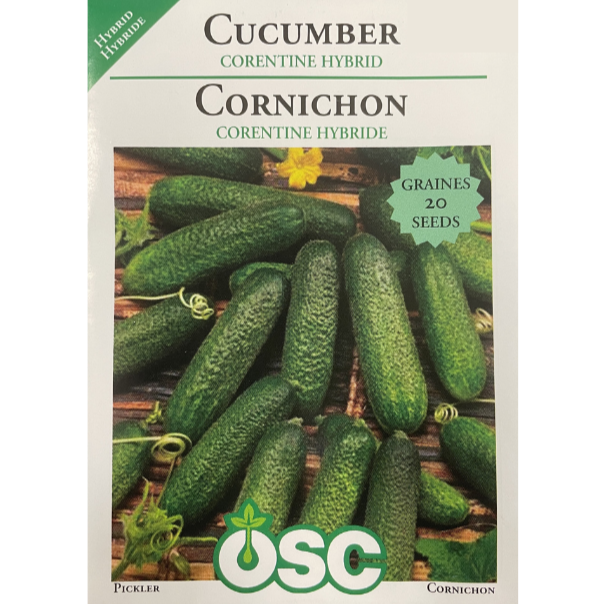OSC Seeds
OSC Seeds Cucumber Corentine Hybrid Pkg.
OSC Seeds Cucumber Corentine Hybrid Pkg.
Couldn't load pickup availability
Approximately 20 seeds/pkt (35 seeds/gram)
An improved European gherkin, Corentine Cucumber Seeds are an ideal choice for an early and reliable harvest. This hybrid is parthenocarpic, meaning it does not require pollination to set fruit, making it perfect for tunnel growing or areas with limited pollinators. The plants are strong and vigorous, with the ability to set fruit even under cool conditions. The smooth-skinned gherkins are 10-15 cm long, with slow seed development that helps them stay crisp long after picking, making them ideal for delicious pickles or fresh mini cucumbers.
- Type: Hybrid Pickling Cucumber
- Fruit: Smooth-skinned, 10-15 cm long
- Features: Very early yielding; parthenocarpic (does not require pollination); stays crisp after picking; sets fruit under cool conditions.
Cucumbers grow best in a rich, warm, sandy loam soil. Before planting, work large amounts of garden compost or composted manure into the soil, about 30 cm deep. Wait until the soil has reached a temperature of at least 18°C before planting to ensure good germination and prevent rot.
Planting: Mound the soil into hills about 15-20 cm high and 30-60 cm across. Space the hills about 120 cm apart. Sow 6 to 8 seeds 2 cm deep in each hill. After the seeds sprout, thin to 3 or 4 plants per hill. If you have limited space, most cucumbers can be grown on a trellis.
Care: Protect the plants from any late spring or early summer frosts. Keep the plants evenly watered throughout the growing season, as even moisture is very important to prevent bitterness. To prevent damage to the vine, harvest the cucumbers by cutting them with a sharp knife instead of pulling or twisting them.
If you’re looking for a dependable and early-yielding cucumber, Corentine is a perfect choice. Its unique parthenocarpic nature ensures a consistent crop even in less-than-ideal conditions, making it a great option for gardeners who have struggled with pollination in the past. Its ability to set fruit in cooler temperatures and its long-lasting crispness make it a standout variety for both fresh eating and pickling.
Share


